
Pediatric sinusitis is a secondary inflammatory disease of the upper respiratory tract, or, more simply, a complication that occurs most often due to untreated sinusitis( a common cold).This is one of the most common childhood diseases, it is well amenable to drug treatment, but if it is started, surgical intervention may be necessary. You will learn how to recognize the disease in time, as well as the methods of its prevention and treatment, from this article.
How to treat the first signs of sinusitis, you can learn from this article.
Contents
- 1 Diagnosis
- 2 Types of the disease
- 3 Home treatment
- 3.1 "Cuckoo"
- 3.2 Surgical intervention
- 4 Prevention methods
Diagnosis
Sinusitis is the inflammation of the maxillary sinuses - small cavities located to the left and right of the nose and connected to its cavities. In newborns, the maxillary sinuses are completely absent, so the disease can appear in children no younger than three to four years - it is at this age that the sinuses begin to form, being in embryo.
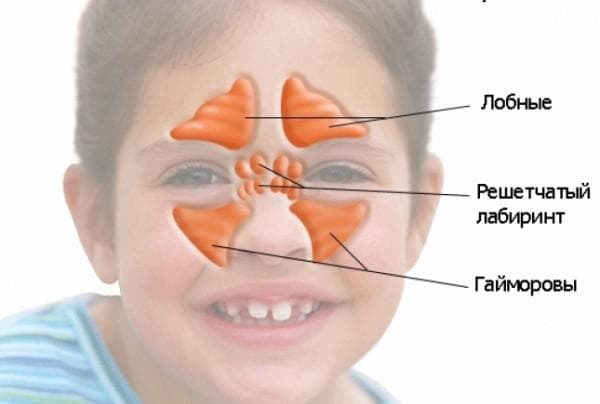
Parents may not even guess that their child has a serious illness, confusing him with the usual common cold - a frequent companion of all preschool children. The disease can be distinguished by the following features.
How to permanently cure sinusitis at home, you can learn from this article.
- Elevated body temperature. It can be like a gradually developing malaise, starting with lethargy, moods and refusal to eat, and a sharp jump - another twenty minutes ago the fun-jumping child begins to "burn."
- Progressive to the evening, a headache, aggravated by sudden movements of the head - bends, slopes.
- Complaints the child that it is difficult or impossible for him to blow his nose.
- Feeling of nasal congestion, ears.
- Pain in the area of the maxillary sinuses.
- Moody thick discharge from the nose is unusual for the common cold, yellow, green. Do not relax, even if the secretions are transparent: this is typical for allergic sinusitis and at the very beginning of the viral and bacterial.
- Vocal nasal, arising from the accumulation of mucus in the sinuses.
- Sometimes - toothache.
Which antibiotics should be taken with genyantritis can be found in this article.
Tip: try very easily, without effort, to push the child's inner corner of the eye, the bridge of the nose, or the maxillary sinuses. If the baby is complaining about painful feelings, most likely, he has sinusitis.
On the video: symptoms of maxillary sinusitis in a child of 3 years:
The above signs, which appeared all together or in any combination, should be an occasion for an emergency call of a doctor who will conduct an examination and prescribe a treatment based on what kind of sinusitis you have to deal with. If necessary, the doctor can refer the patient to a radiograph.
How does the procedure Yamik in case of a sinusitis disease, you can learn from this article.
Types of the disease
Just like the common cold, sinusitis in children is classified into viral, allergic and bacterial. The first two occur simultaneously with the sinusitis of the corresponding type, are treated the same way, and extremely rarely end with complications, but the bacterial requires closer monitoring of the doctor and radical methods of treatment. It is this kind of disease in our country that is usually called sinusitis. 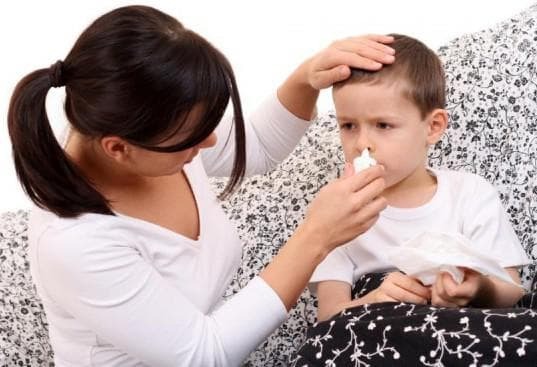
Disease occurs due to restricted access to the air in the sinus. This occurs with a protracted runny nose, when the nose is constantly stuffed, and pathogenic microorganisms begin to multiply in its cavity. Sinuses are filled with a product of their vital activity - pus, and bacterial sinusitis occurs. It has the same symptoms as the other two types of the disease, but the treatment is very different. Because sparing therapy is inadvisable in this case( the upper walls of the maxillary sinuses are too close to the membranes of the brain, which can cause serious complications), the doctor prescribes antibacterial therapy.
What is the prophylaxis of sinusitis, you can learn from this article.
Do not prescribe antibiotics either to yourself or your child yourself, guided by your own experience, recommendations from relatives and friends, and by consulting doctors on medical Internet portals. Remember - a professional will never prescribe medicines in absentia, so the decision to prescribe antibacterial therapy can only be taken by the attending doctor.
If the disease can be disposed of in two to three weeks, it is considered acute, and when the treatment is delayed for a month or more, it is classified as chronic.
Home treatment
The disease is well amenable to drug treatment at home, especially if the following rules are observed.
What is the price of drops in the nose rhinofluimucil, you can learn from this article.
- Washing of the nose cavity with water with the addition of sea salt .In a glass of cool boiled water, dilute half a teaspoon of natural sea salt without dyes and fragrances( sold in pharmacies) and rinse the nasal passages with a syringe without a needle or a small syringe. A single washing volume for a child of 3 years is approximately 150 ml.
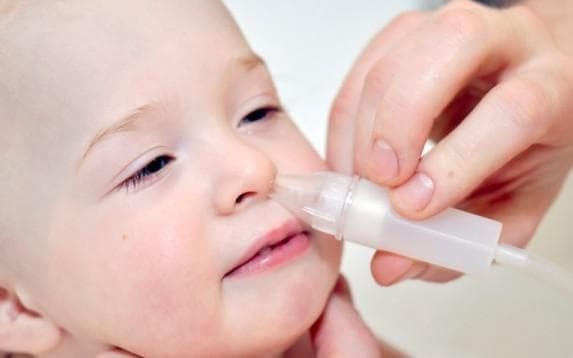
- Maintaining the optimum room temperature of the : it must not exceed 24 degrees.
- Humidification of air - this will help a special humidifier, and in the heating season - a wet towel laid on the battery.
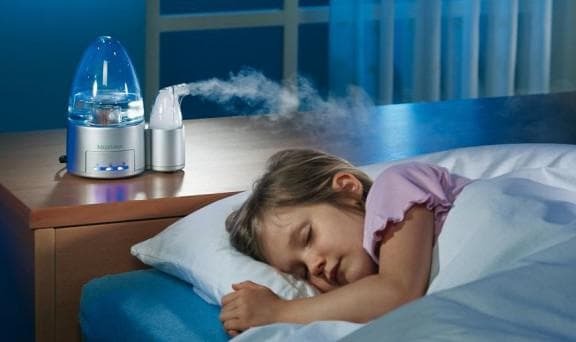
Do not attempt to treat bacterial sinusitis with the help of traditional medicine or homeopathy. Accurately observe all the doctor's instructions: give the medicine in time, rinse your nose, water it with the recommended spray and drops. Harm from taking antibiotics does not go to any comparison with the consequences of a purulent inflammation of the maxillary sinuses.
What are the symptoms of sinusitis in adults, you can learn from the article.
"Cuckoo"
This is an old but effective and painless outpatient method of deep rinsing, which is prescribed if the medications did not help. During the procedure, the otolaryngologist inserts a tube into one nostril through which a disinfectant solution enters the nasal cavity, and from the other nostril the same liquid is sucked off by a special vacuum device.
Passing through the sinuses, the liquid removes mucous accumulation and pus, kills bacteria. To a solution with all of the above does not hit the larynx, a small patient repeats the "ku-ku" throughout the process. The patient's condition becomes noticeably better after the first procedure, but to fix the effect of the need to hold at least five. 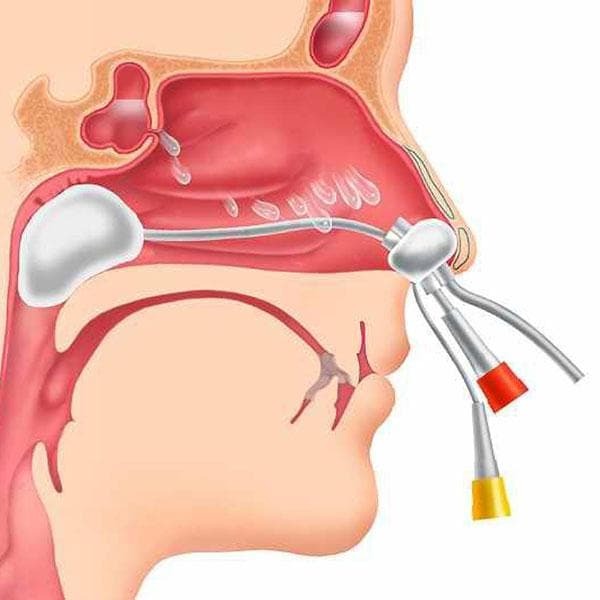
Surgical intervention
There are two methods of surgical treatment of the disease - puncture and endoscopy. The second method is much more sparing, it is performed by a laser, a special surgical scalpel or rotating barbs. The surgeon can see the surgical area using an endoscope, which is inserted into the nasal cavity through the nostrils along with the surgical instrument.
How to quickly treat sinusitis at home can be found by reading this article.
Puncture( puncture) is performed by a large needle under local anesthesia. The doctor pierces it with a bone septum between the maxillary sinus and nasal passage and rinses the sinus with saline solution, and at the end of the procedure - with an antibiotic. Slime and pus flow through the mouth, so the patient sits, opening it and leaning slightly forward. 
Surgical intervention from a psychological point of view negatively affects the child for 3 years. If the attending physician insists, do not be too lazy to show the child to one or two other specialists to confirm the appointment.
If they are unanimous, do not panic - ask the surgeon to pick up a good anesthetic and remember that the child feels your condition. Try to calmly and easily explain the baby the essence of the operation, do not deceive him in any way: it will save you from shock and will significantly reduce stress.
How does a spray from a genyantritis, it is specified in given clause or article.
Prevention methods
Purulent maxillary sinusitis refers to diseases that are easier to prevent than cure. Proper prevention allows you to reduce the risk of its development by one third. It consists of the following set of measures.
- Prevention of acute respiratory viral infections: strengthening immunity, frequent walks in the open air, healthy food, including a large number of vegetables, fruits, greens.
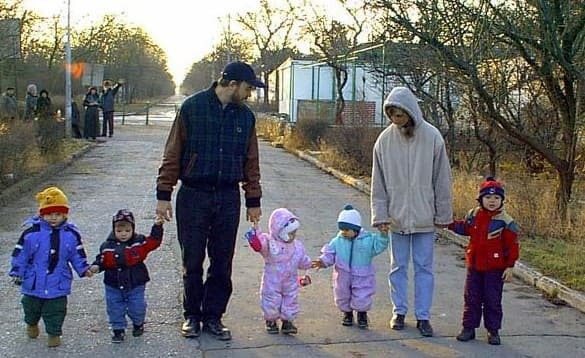
- When visiting children's groups - taking immunomodulating drugs( only as directed by a doctor).
- If the virus infection was not prevented yet - timely and full treatment and isolation from the team. Many parents do not consider the runny nose a disease if it is not accompanied by fever, and continue to drive the child to the kindergarten. It is absolutely impossible to do this - immunity even in mild sinusitis is weakened and the condition can quickly deteriorate.
- If the cause of the disease is adenoids or polyps, the doctor may recommend their removal, and if the deformed nasal septum, it will have to be corrected.
- Daily washing of the nose with "sea" water, prepared according to the above recipe. This tool is not only curative, but also preventive, it has no contraindications( except for ear inflammation) and moisturizes the nasal passages well. Teach your child to wash the nose every night before brushing your teeth.
How to treat catarrhal sinusitis, you can learn from this article.
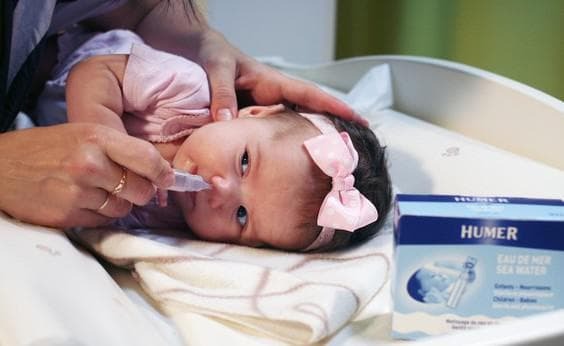
At any stage of the disease and with any prescribed treatment, the parents of the child should remember that maxillary sinusitis is not a sentence, but a temporary inconvenience, which, with the right approach, can be quickly eliminated without the risk of complications and relapses.
